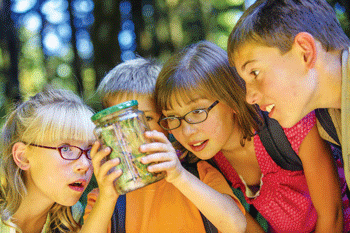 The pandemic has impacted learning experiences for students across America. Educators, parents and students will continue to navigate these challenges as they look for ways to redefine learning.
The pandemic has impacted learning experiences for students across America. Educators, parents and students will continue to navigate these challenges as they look for ways to redefine learning.
With new norms of educational learning still being defined, we have a real opportunity to find creative and engaging ways to expose young and diverse thinkers to the vast world of science around them. One of the ways to do this is by connecting science to the things kids are already passionate about — sports, music, dance, art, gaming, or anything else they may be interested in.
America’s favorite rapping teacher, Dwayne Reed, shares creative ways educators and parents can help kids find a “way-in” to science that will ignite their passion for STEM (Science, Technology, Engineering and Math) learning and make science more approachable:
1. Extend STEM Beyond the Classroom. Show kids how to apply the scientific method in their day-to-day lives and activities. As individuals, we make observations daily and ask questions — or hypothesize — based on what we observe. Parents and educators can foster an inquisitive mindset by challenging kids to explore the world around them. This creates fun and relatable learning experiences inside and outside the classroom.
2. Connect Personal Passions to STEM Learning. When students lack confidence in a particular subject, it can feel intimidating. As a result, they can often have a hard time seeing themselves as successful in that subject or can lose interest altogether. We want to encourage our kids and show them they can be anything they want. One of the ways to do this is by connecting what they already love to something they are not as confident in. STEM is a perfect example of this. Show students how science can be applied to their other interests. By helping connect the dots for students, they can turn their passions into something that can benefit the world around them.
3. Keep A Pulse on New Educational Resources. Stay updated on new resources and information that could positively impact your students by reading blogs, educational articles, and looking for resources on social media. One learning resource to check out is 3M’s Science at Home video series. This online library of DIY science experiments uses common household items to help make STEM learning fun and accessible while showing kids they can connect science to just about anything. Teachers will also note that the step-by-step resources include national science teaching standards for easy lesson planning.
4. Challenge Kids to Try Something New. Challenge kids to put themselves into roles they may not naturally see themselves in. Provide encouragement and resources to get them to the next level. With a bit of creativity, you can open their eyes to a whole world of opportunities. Make STEM learning feel relatable and fun — even if it’s new for them. It’s all about reframing the way students look at the world and giving them assurance and an opportunity to explore what’s around them.
The importance of maintaining a stable and engaging learning experience for students remains a priority. And with just a few creative learning techniques and models, educators and parents can ensure their students are connected, actively learning and feeling encouraged both in and out of the classroom.